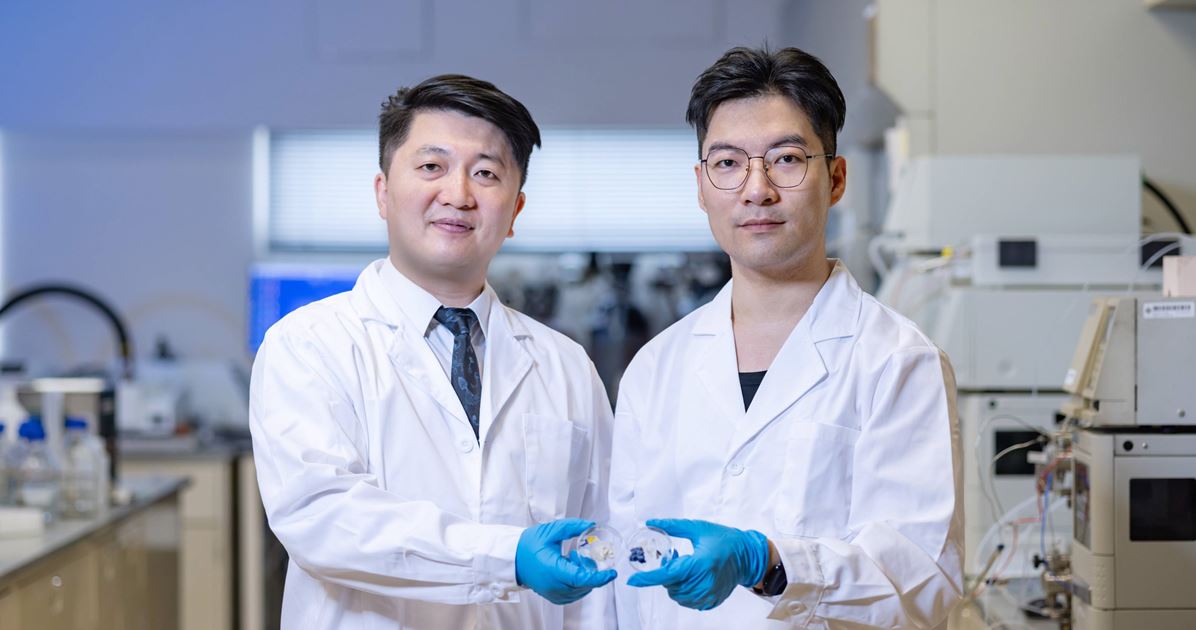
Research Reveals Plastic’s Microbial Threats to Ecosystem
Four hundred million tonnes of plastic waste are produced every year worldwide. More than seven billion tonnes have been generated in total to-date, with less than 10% having been recycled and about 80% accumulating in the environment. While discussion about plastic pollution often hinges on marine animals ingesting the waste or harmful compounds being leached out of plastics, a research team of The Hong Kong Polytechnic University (PolyU) has shed light on the often-overlooked microbial threats associated with plastic waste. The team is developing a global database and model to map the trajectory of the harmful microbiomes carried by plastic debris and to forecast the potential ecological risks.
Plastics comprise a variety of compounds that can serve as nutrients for microbes attached to them. These microbes develop distinctive microbial communities that colonise plastic debris in both aquatic and terrestrial environments, forming what is referred to as the plastisphere. Previous research revealed that one gram of marine plastic can contain up to ten times the microbial biomass found in 1,000 litres of open-ocean water. This indicates that, as plastic waste continues to grow and degrades at an extremely slow rate, the plastisphere is expanding rapidly and harbours an abundance of microbes.
Led by Prof. JIN Ling Nathanael, Assistant Professor of the PolyU Department of Civil and Environmental Engineering and Department of Health Technology and Informatics, the research team combined field-collected samples and publicly available raw data to analyse the microbial communities in the plastisphere and its associated natural environments, covering freshwater, seawater and terrestrial ecosystems. Providing a comprehensive overview of the unique and diverse microbial communities of the plastisphere, the findings have been published in the international interdisciplinary journal The Innovation and recognised as its Most Popular Paper from 2020 to 2024.
The research found that, in all three environmental systems, microbial communities in the plastisphere differ markedly from those in the natural environment, in terms of both the genera of microorganisms present and their coexistence patterns. These communities consist of fragile networks of specialised microorganisms, which are rarely encountered in nature.
Compared with microbial communities in the natural environments, microorganisms in the plastisphere boast a pronounced ability to decompose organic compounds, potentially increasing the release of greenhouse gases and accelerating carbon turnover. The findings also highlight disturbances in the nitrogen cycle caused by the plastisphere, especially in freshwater ecosystem where bacteria that release harmful substances such as nitrite and nitrous oxide thrive.
In addition, a significant rise in pathogens that pose risks to humans, animals and plants is spotted in the plastisphere. Notably, some of the pathogen species have not been detected in the corresponding natural environment previously, which indicates the potential of the plastisphere to carry pathogens across ecosystems.
Prof. Jin said, “Plastic waste and the microbiomes it carries can travel long distances via different means like streams and wind, and can disturb the natural distribution of microbial species. As viruses can survive longer and are more infectious in the plastisphere, this may accelerate the spread of pathogens and also prompt disease outbreaks. Traditionally, plastic pollution has been evaluated primarily based on its physical and chemical impacts, but it is now crucial to also consider the microbial threats posed by plastic waste.”
Prof. Jin and his team were invited to offer insights into this critical issue in the international journal Nature. They explained the fact that the plastisphere is composed of plastic fragments ranging in size from micrometres to several metres enables it to carry its inhabiting microbiomes into ecosystems and the food chain through various pathways. For instance, submicrometre-sized plastic particles can be directly absorbed by crops while larger plastic debris can easily be ingested by animals.
The researchers therefore emphasised the importance of assessing the impact brought by the plastisphere on the ecosystem and of forecasting the potential risks. By integrating findings from ground monitoring, laboratory experiments and simulation modelling, they set the goal of mapping the trajectory, transport dynamics and fate of plastic debris carrying microbiomes across ecosystems, regions and countries. Prof. Jin elaborated, “This is a complex yet achievable task, requiring extensive international and interdisciplinary collaboration, along with the application of advanced technologies such as geographic information systems, remote sensing and nano-sensors connected through the Internet of Things. A crucial aspect of this project is to standardise methods across different research endeavours and establish a global data-sharing framework in order to provide consistent and actionable advice.”
Global database for mapping the trajectory of the plastisphere
The team actively collaborates with global partners, including academic institutions, government departments and NGOs, to collect plastic samples, create a comprehensive planetary catalogue of hazardous plastisphere microbiomes and track the flow of associated risks. Leveraging existing plastic waste migration and accumulation research, they are now developing a model to assess and quantify the microbial impacts of plastic pollution. This new model is based on existing plastic presence data and future emission scenarios and will be validated through simulation experiments.
Prof. Jin stated, “The severity of the projected effect of the plastisphere varies by geographic location and is closely linked to regional human activities, development and environmental management. Through enhanced mapping and tracking, the project will deepen our understanding of microbial migrations on plastics, enabling more accurate risk assessments and targeted interventions in critical areas. The data can also serve as guidance for more effective environmental policies and public health strategies, particularly in regions most affected by plastic pollution.”
https://www.polyu.edu.hk/media/Media-Releases/2025/0507_PolyU-research-unveils-hidden-microbial-threats-to-ecosystem-caused-by-plastic-waste

